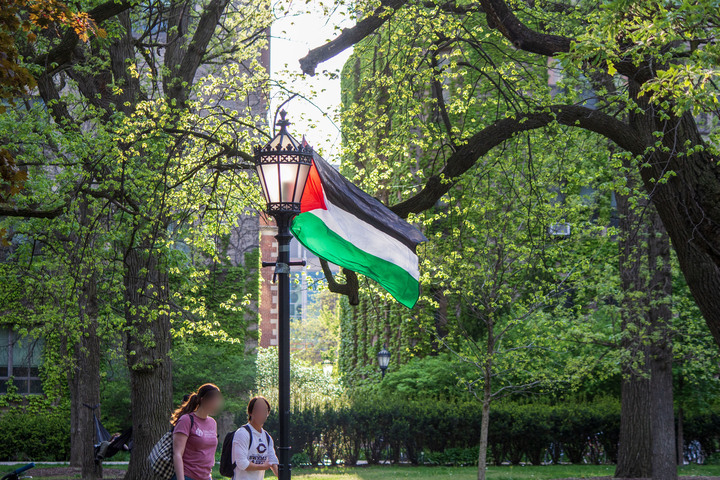The recent arrest of a student in Regenstein library has set off a blaze of controversy. Though the incident is still fresh and its details only preliminary, the narrative of events reported in Friday’s Maroon leaves many of us deeply troubled. Quite naturally, students have plenty of questions that need to be answered.
The event is disconcerting, but it doesn’t stand on its own. Any such occasion elicits speculation about how best to interpret it in light of broader circumstances. It is an opportunity for speculation on ongoing trends, and it opens up a space to address issues that normally wouldn’t see the light of day. That said, it is also a moment in which members of the University community must act with equanimity. We must be careful not to overanalyze or under-scrutinize. The Administration must show tact and good will, demonstrating full commitment to dialogue and information-sharing. The student body, for its part, must ensure that the Administration fulfills these duties, and refrain from stoking the flames of contention to no good end.
What we face on this campus is the same sticky dilemma that has bogged down other universities in recent years. What is the role of university police departments (UPDs) and what is the relationship of their personnel with the student body? UPDs have kicked up trouble on all sides, catching flak both for under-responsiveness (the Virginia Tech shootings) and heavy-handedness (“Don’t tase me, bro!” at University of Florida). It’s a tight rope to walk, enforcing the law on campus and also attending to the safety and security issues present in such a diverse environment. With large numbers of young people squeezed into small spaces, throttled with alcohol and the myopic glow of early adulthood, issues of vulnerability and excitability top the list of special concerns. And while public universities work to protect neighborhood residents from rowdy students, private universities like our own also try to protect students from neighborhood residents.
It’s hard to say whether we should be more relieved or startled when we learn our university helms the largest private police force in the country, a force funded on the corporate dime but charged with public power. It often feels like we’ve got a gang of Pinkertons at our disposal, and many students perceive accordingly that UCPD is here to protect us, rather than arrest us. Officers seem disinclined to the aggressive tactics used by city cops, so students brand them as pushovers indisposed to the enforcement of repressive laws against us. It’s no secret that we covet our privileged status as students, members of the corporate body, which seems to insulate us against the wage-earning, badge-carriers of the UCPD. On the other hand, many students are uncomfortable about UCPD’s activities on the South Side, and some routinely scrutinize its operations as pieces of the bigger puzzle of managing community relations, or most recently “community engagement,” a puzzle the University of Chicago has never really solved.
These complex feelings towards the UCPD tend to merge uncomfortably when University members get trapped in the UCPD dragnet. Because of the ethnic and socioeconomic disparity between Hyde Park and the surrounding communities, the issue of racial profiling, targeting “people of color” for undue harassment, has lingered for decades. When a University community member who is also a person of color is stopped or detained by the police, this revives attention to the underlying issue, and opens a new chapter in a protracted real-life drama. The issue isn’t new, and it’s not going away any time soon.
But the question of profiling is not the only one that should be on our minds. Clearly, the relationship between University police officers and students is quite murky, due in part, it seems, to the curious way in which they regard each other. Officers are challenged to promote the kind of safe environment into which parents will be comfortable sending their kids, and investors their money. These private interests tend to brush against the public force of law and the norms of urban policing, or at least it’s easy to perceive that they do so. And as beneficiaries of this special police protection, students sometimes have trouble sifting between their feelings for ‘at-home’ familiarity with campus and the obstinate fact that the law applies here as much as anywhere. To put it simply, students may be more vigilant about their rights than many other Americans most of the time, but when we’re hanging about our own stomping-ground, we’re especially defensive.
Police encounters are traumatic. And as a student, there’s nothing more unimaginable than being forcibly removed from the premises of one’s own library. But the problem likely boils down to a complex admixture of confusion and misinterpretation. At base, it’s the objectionable product of a very ambiguous relationship. In the following days, as we examine what transpired in Regenstein last week, we should also confront the role of the UCPD on campus and its relationship to the student body. We may open up a can of worms, but the good to be gained is for students to have better understanding of campus policing and the rights and responsibilities with which we are all endowed.
— Marshall Knudson is a fourth-year in the College majoring in anthropology.







